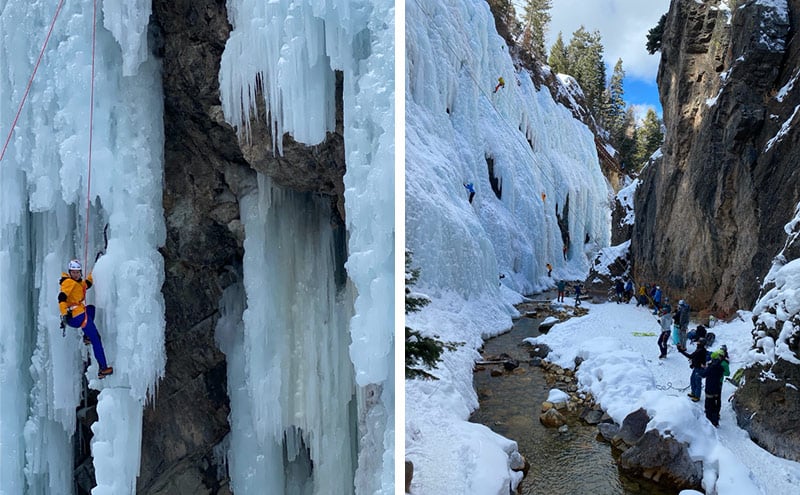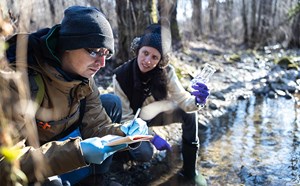
Ice Climbing – How Safe Can it Be?
Most people think of ice climbing as quite an extreme sport. After all, climbing a frozen waterfall isn’t something humans were evolutionarily designed for. I knew little of the sport before I was asked to help lead a medical team to serve the medical needs at an ice climbing festival (please refer to above article). While I have medically staffed many events, I wanted to be sure I was prepared for what type of injuries we may encounter. Therefore, I turned to my trusty sidekick: Google Scholar.
Not surprisingly, there are few studies that examine injury patterns and epidemiology in any climbing modality, let alone ice climbing. However, there have been a few articles worth sharing here. In 2010, Schöffel et al. (1) published a review article discussing climbing injuries with a subsection addressing ice climbing. Here, they compiled data from several small studies to calculate a risk of 4.07 injuries/1000 hours of climbing. The ultimate conclusion was that ice-climbing was safer than many contact team sports, but more dangerous than mountain biking and rock climbing.
Another study (2) aimed to collect data at an ice climbing festival at the Sochi Winter Olympics in 2014. The ice climbing venue was created as a cultural program in an attempt to introduce the sport to Olympic spectators. Many novice climbers were encouraged to participate and several professional athletes competed. Injuries were treated by 2 on-site physicians who recorded all injuries sustained. In this study, a much higher incidence of injuries was documented at 248/1000 hours. Because the participants only were allowed to climb for 2 minutes and professional athletes were typically on the wall for only 10 seconds, the total time climbing was quite short. Penetrating and superficial soft tissue injuries such as cuts and bruises were the most common, especially to the head and face.
In 2017, Runer et al. (3) published a prospective study of ice-climbers in an attempt to better characterize injuries suffered by ice-climbers. Seventy climbers returned surveys over the course of one winter. Here, an injury rate of 9.8/1000 hours was found with the majority of injuries occurring in intermediate climbers, rather than advanced or beginner. Leading was found to be more risky than top-roping. Of all the injuries, 60% attributed the injury to falling ice. Furthermore, 81% were mild, 17% were moderate, and 2% severe. There were no catastrophic injuries noted. The head and face were injuries in 50% of the incidents, most of which being abrasions or lacerations.
In summary, ice-climbing is a bit less extreme than one may think. While there is a chance for serious trauma to occur, most injuries are mild. Because many injuries involve the head and face, wearing a helmet (required in our ice park) and face shield/goggles can prevent a significant number of injuries. Being aware of your surroundings, examining the quality of the ice, and learning from more experienced climbers is also important. From our experience staffing the ice festival, we found the data in these studies to reflect the injuries we saw – minor, soft tissue and orthopedic injuries, and no severe injuries.
- Schoffl V, Morrison A, Schwartz U, Schoffl I, Kupper T. Evaluation of Injury and Fatality Risk in Rock and Ice Climbing. Sports Med. 2010; 40(8): 657-679.
- Mashkovskiy E, Beverly J, Stocker U, Bychkovskiy S. Ice Climbing Festival in Sochi 2014 Winter Olympics: Medical Management and Injury Analysis. Wilderness Environ Medicine. 2016: 27; 117-124.
- Runer A, Lampl K, Neunhauser D, et al. A 1-Year Prospective Analysis of Ice Climbing Injuries. Clin J Sports Med. 2017; 27(2): 161-167.
David Young, MD MS FAWM DiMM
Department of Emergency Medicine, University of Colorado School of Medicine



